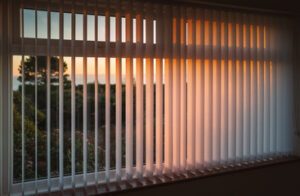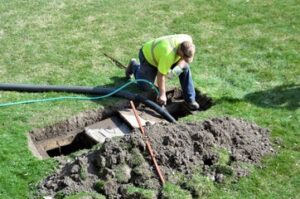Blinds can make a dramatic impact on the ambiance and overall aesthetic of any room. Their adjustable slats offer precise control over light levels, making them ideal for rooms like living spaces and home offices where lighting needs can fluctuate.

They also provide privacy and a layer of energy efficiency. Visit https://www.customblindsandshadesky.com/ to learn more.
Blinds are a practical solution for managing indoor temperatures, protecting furniture from sun damage and keeping homes cool when the mercury rises. They can even reduce drafts that stir up dust and allergens, making them a smart choice for allergy-prone rooms like bedrooms or kitchens.
Blinds come in a wide variety of styles and materials to suit different needs. For example, a fabric shade with a cellular design can help improve indoor air quality and reduce energy consumption by trapping heat in winter and cooling it in summer. In addition, a shade with UV-resistant finishes can protect interiors from harsh sunlight and prevent fading over time.
To control indoor temperature, blinds are often crafted with advanced materials that provide insulation and block harmful UV rays. These materials include cellular shades, solar film, and window shades with a honeycomb-like structure that can trap air and keep spaces more comfortable. Blinds that incorporate these advanced fabrics are designed with a high R-value, meaning they can effectively regulate temperatures and minimize heat gain in the summer and heat loss in winter.
In addition to helping regulate temperatures, some blinds also offer a range of features to make them easier to maintain and operate. For instance, some models are motorized to make them simpler to open, close, and tilt, while others feature a remote or smartphone app that lets you control your window blinds from anywhere.
While blinds offer many benefits for homeowners, they also require regular maintenance to keep them looking and working their best. Blinds with individual slats can be prone to collecting dust over time, so it’s important to regularly wipe them down with a microfiber cloth or vacuum with a brush attachment. Additionally, it’s recommended that you regularly adjust the slats to ensure they remain firmly in place and avoid gaps or unevenness. Other components that can affect blinds’ maintenance requirements include the control length, the headrail, and the mounting brackets. The control length refers to the amount of space you have for raising and lowering the slats, while the headrail is the frame that holds the slats and supports their weight. The mounting brackets connect the headrail to the wall or window frame.
Managing Light
Every room in your home has a different purpose, and each requires a tailored approach to light control. Bedrooms, for example, demand blinds that offer optimal privacy and light blocking to ensure restful sleep while media rooms require a balance between sunlight entry and glare reduction. Tailoring your blinds to the needs of each space elevates their functionality as instruments of light orchestration and transforms windows into captivating design focal points that contribute to a home’s overall aesthetic.
Blinds allow you to determine how much daylight enters a room, allowing you to save on energy costs. In addition, you can choose from a wide array of shades and styles, with thicker fabrics like cellular honeycomb treatments providing excellent insulation, keeping hot summer air out and cool winter air in. Shades also offer a range of light-control options, with some styles able to be completely closed while others have predefined opacity levels.
If you prefer a more minimalist look, Roman shades are available in an assortment of patterns and colors to make a stylish statement while offering effective light management. However, these types of window dressings are unsuitable for damp environments such as bathrooms and kitchens, where they will quickly fall victim to mould, grease, and odours. For these rooms, a more robust PVC Roller blind is a much better option.
Similarly, window blinds that are angled to open only at the top of the window frame and the bottom of the window sill provide a layered effect that offers a combination of privacy and natural light. This type of blind is also ideal for bedrooms where children often sleep during the day, protecting their privacy while ensuring they are exposed to sufficient light.
Besides their practical benefits, blinds can also serve as a protective shield against the sun’s harmful UV rays, extending the life of furniture, flooring, and artwork. Blinds can be fitted with specialized UV filters or blockers, making them the best choice for street-facing living areas and bathrooms where you want to enjoy natural light while maintaining privacy.
Adding Style
Blinds can complement and enhance a home’s decor. They come in a wide variety of colors, materials, and styles. They’re also very versatile and easy to maintain. For example, wood blinds can be cleaned by merely wiping the slats with a damp cloth to remove dust and dirt. They can be customised to suit specific window sizes and shapes, or even matched to wallpaper for a uniform look.
Another benefit of window blinds is that they can provide a degree of privacy. This feature is especially useful for bedrooms, where blinds allow you to control how much light filters into the room, whether you want filtered sunlight or complete darkness. They can also be used to block out heat and cold, which can help you get a better night’s sleep.
Many people choose to pair their blinds with sheer curtains, creating a perfect balance of style and functionality. Depending on the material and style, these fabrics can add a touch of warmth or brightness to a room. They can also be arranged in various ways, including as top treatments or in-built drapes, to create a more layered look that enhances visual interest and depth in the space.
Some types of window blinds can be operated with a remote or app, which offers additional convenience and allows for more precise light control. They can also be scheduled to open and close at specific times, which makes them a great option for people with busy lifestyles.
If you’re thinking about buying blinds for your home, be sure to consult a professional to ensure they will be the right fit. Mail-order and telephone catalogues can offer cheaper prices, but you’re responsible for accurate measurements and will have to pay for returns if the blinds don’t fit. A local company will have a wide selection of blinds and can ensure the best quality. They can also offer advice about complementary window treatment options, such as drapes or curtains. They can also give you a quote and install your new blinds in just one visit. This saves you time and money, and it helps avoid the hassle of measuring and remeasuring multiple windows.
Repairing Existing Blinds
When blinds are properly maintained, they can provide years of useful service and add value to your home. However, they can also be damaged by accidents and wear-and-tear. Rather than discarding broken window blinds, consider repairing them to restore their functionality and aesthetics.
The blinds’ lift cords (also known as pull cords) run through a threaded mechanism from the bottom rail to the slats, allowing you to raise and lower them. To repair a broken pull cord, first secure the strings at the top with an A-clamp or clothespin. Then, remove the plugs on the bottom rail that hold the cords in place with a screwdriver. Once the cords are unplugged, you can simply slide each slat down and out of the headrail to remove them.
You can purchase replacement blind cord at hardware stores or specialty online retailers that sell them specifically for use with blinds. Be sure to purchase the proper cord instead of ordinary twine, which may break or catch as you move the blinds up and down.
If you’re concerned about your privacy, you can purchase a blackout lining that will help block out light from the outside and keep people from seeing into your living spaces. This can be a valuable addition to bedrooms, bathrooms, and movie rooms, and it’s especially helpful in homes where land sizes are smaller and neighbours live close by.
Vertical blinds can also be repaired by replacing a single vane that has become damaged or dislodged. A stripped master gear, which is common in these types of blinds and can be caused by repeated stress or a sharp jolt, directly hampers the blinds’ ability to rotate. The fix is simple – replace the defective master gear with an identical one and your blinds will once again work seamlessly.
Blinds are a stylish and practical addition to any home or office. Whether they’re simply being repaired, or you’re in the market for new window coverings to elevate your decor, we have the styles and colours you’ll love. Book a commitment-free consultation with our team to get started.


